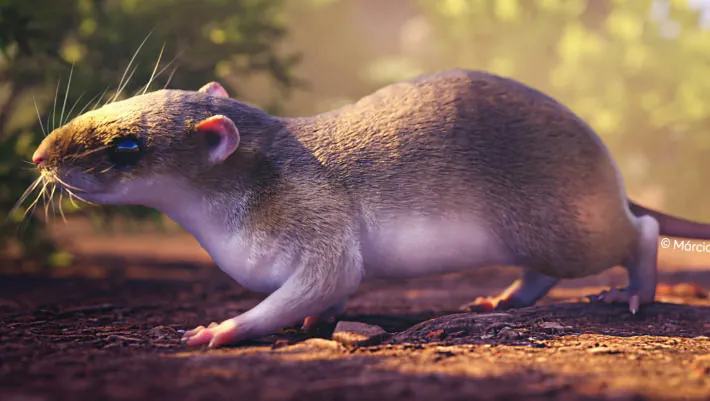
Unveiling the Past: New Extinct Octodontoid Rodent Species Discovered in the Amazon
2025-09-15
Author: Jia
Exciting Discovery in the Amazon
Paleontologists have made a groundbreaking discovery with the identification of a new species of rodent, named Acarechimys hunikuini, from an extinct genus that once roamed the vast landscapes of South America. This remarkable find was made from partial jaw and teeth fossils uncovered in Brazil.
Journey Back 10 Million Years
Acarechimys hunikuini inhabited the region we now recognize as the Brazilian Amazon around 10 million years ago during the Late Miocene epoch. This ancient creature belonged to the Octodontoidea family, a fascinating group of Neotropical hystricognathous rodents within the broader Caviomorpha parvorder.
Diversity in Rodents: A Complex Evolutionary Tale
Dr. Emmanuelle Fontoura, a leading paleontologist from the Universidade Federal de Santa Maria, emphasizes the incredible diversity of hystricognathous rodents in the Neotropics. "These mammals exhibit a remarkable range of taxonomic and ecological adaptations, reflecting a complex evolutionary journey," she notes. Such rodents make their sudden appearance in the South American fossil record at the tail end of the Eocene epoch, particularly notable in Peruvian Amazonia.
Unraveling the Caviomorph Family Tree
By the Early Oligocene, the variety within these rodents had already blossomed, leading to the emergence of distinct crown groups. Currently, modern caviomorphs encompass 266 species divided into two major clades and four superfamilies, which include the Erethicavioi and Octochinchilloi lineages.
Unearthing Rich Fossil Deposits
The dental fossils of Acarechimys hunikuini were excavated during field research conducted in 2019 and 2022 at the PRE06 outcrop within the Solimões Formation, close to Feijó in Acre, Brazil. This geological formation has been an incredible source of vertebrate fossils since the mid-19th century.
A Tapestry of Life in the Past
The Solimões Formation offers a glimpse into an astonishing diversity of prehistoric life. From bats and cetaceans to primates and reptiles, this site has yielded a plethora of fossils, showcasing a vibrant ancient ecosystem.
Highlighting Amazon's Biodiversity
The discovery of Acarechimys hunikuini underscores the coexistence of various superfamilies of caviomorph rodents alongside other animal groups, illuminating the rich biodiversity of the Brazilian Amazon during that era. Researchers suggest that Acarechimys likely originated during the Late Oligocene and thrived during the Early Miocene before expanding northward in the Americas.
Challenging Yet Rewarding Research Ahead
This finding supports theories about the prolonged survival of some rodent lineages in tropical regions, a phenomenon observed in various groups. The evolution and diversity of Acarechimys pose unique research challenges due to limited data and differing academic opinions. More thorough studies are essential to deepen our understanding of this fascinating lineage of Octodontoidea.
Published Findings
The team’s significant findings have been documented in the Journal of Vertebrate Paleontology, heralding a new chapter in the study of prehistoric rodent evolution.



 Brasil (PT)
Brasil (PT)
 Canada (EN)
Canada (EN)
 Chile (ES)
Chile (ES)
 Česko (CS)
Česko (CS)
 대한민국 (KO)
대한민국 (KO)
 España (ES)
España (ES)
 France (FR)
France (FR)
 Hong Kong (EN)
Hong Kong (EN)
 Italia (IT)
Italia (IT)
 日本 (JA)
日本 (JA)
 Magyarország (HU)
Magyarország (HU)
 Norge (NO)
Norge (NO)
 Polska (PL)
Polska (PL)
 Schweiz (DE)
Schweiz (DE)
 Singapore (EN)
Singapore (EN)
 Sverige (SV)
Sverige (SV)
 Suomi (FI)
Suomi (FI)
 Türkiye (TR)
Türkiye (TR)
 الإمارات العربية المتحدة (AR)
الإمارات العربية المتحدة (AR)